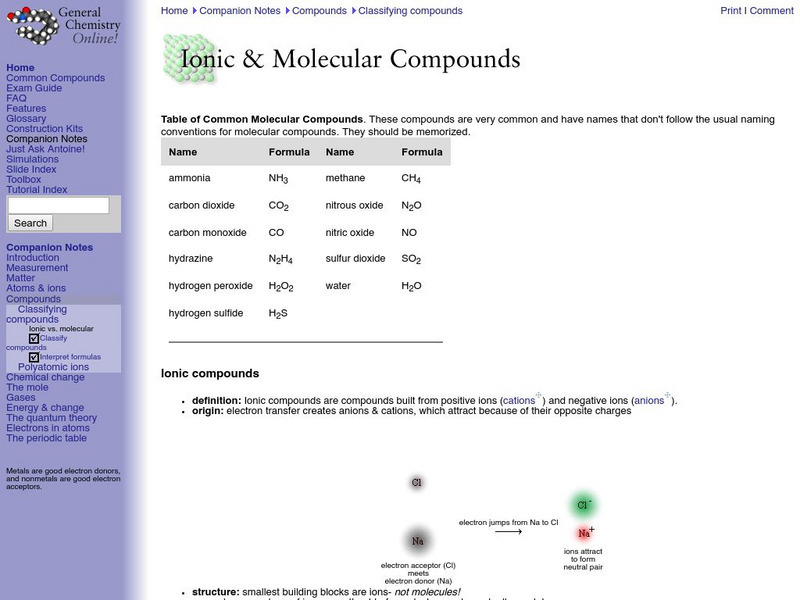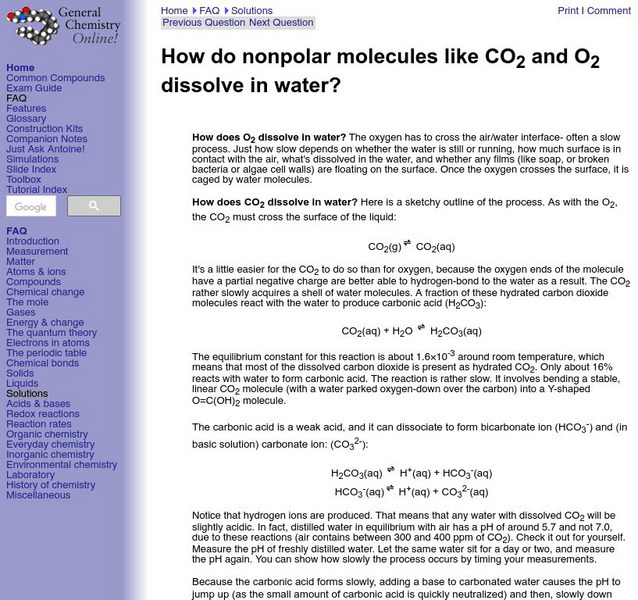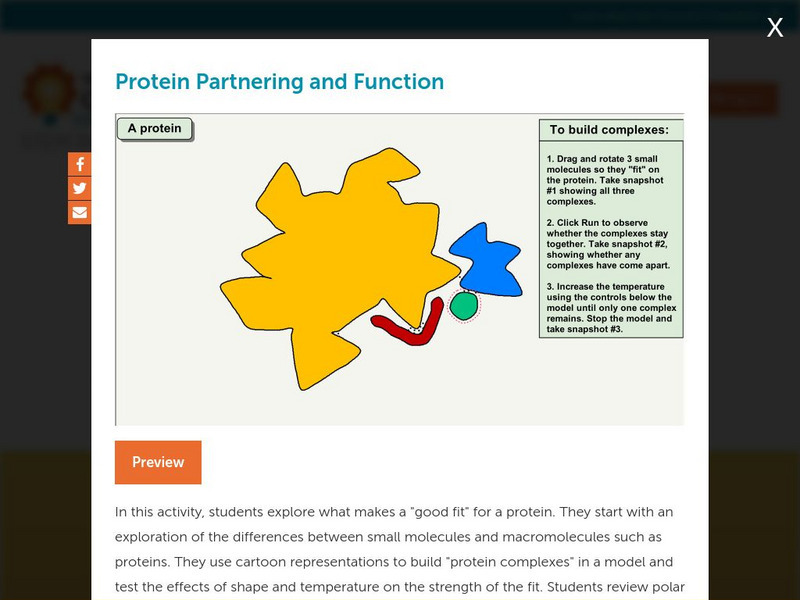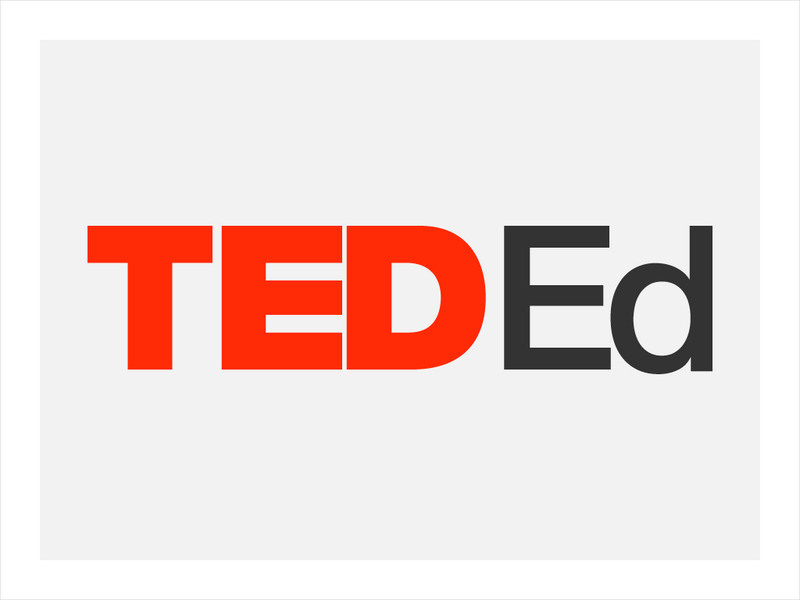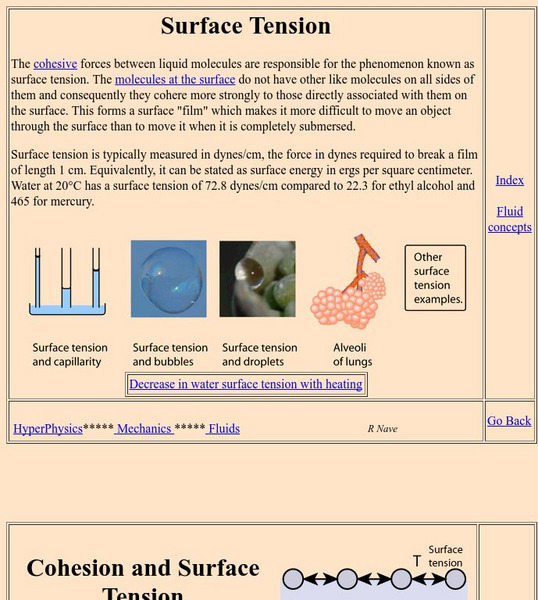Hi, what do you want to do?
OpenStax
Open Stax: Structural Organization of the Human Body
Try considering the structures of the body in terms of fundamental levels of organization that increase in complexity: subatomic particles, atoms, molecules, organelles, cells, tissues, organs, organ systems, organisms and biosphere....
Bill Nye
Bill Nye: Hole Y Water
This tutorial from Bill Nye uses an experiment with water and sugar to show how matter is mostly empty space.
Other
Beautiful Chemistry: Beautiful Structures: Gas and Liquid
In Beautiful Chemistry, we talk about crystals, quasicrystals and glasses, which are all solids. Here, we see the molecular structure of gases and liquids.
Frostburg State University
General Chemistry Online: Ionic and Molecular Compounds
Provides a good outline of the concepts involved in ionic and covalent bonding, with links to definition of terms. Features a list of common molecular compounds and a chart that compares ionic and molecular compounds.
Frostburg State University
University of Frostburg: How Nonpolar Molecules Dissolve
This site from the University of Frostburg provides an explanation of the process by which nonpolar molecules dissolve in water.
Frostburg State University
General Chemistry Online: Simple Compounds Faq
Studying simple compounds in chemistry? Find answers to several commonly asked questions with topics ranging from compound classification to polyatomic ions.
US Geological Survey
Usgs: Capillary Action
Capillary is described and explained. It is related to surface tension. Examples in botany and human physiology are given.
Concord Consortium
Concord Consortium: Protein Partnering and Function
In this activity, students explore what makes a good fit for a protein.
Concord Consortium
Concord Consortium: Heat and Temperature
Learn that temperature measures average kinetic energy, and heat is the transfer of energy from hot systems to cold systems. Consider what makes a good conductor. (Requires Java)
TED Talks
Ted: Ted Ed: What Is the Shape of a Molecule?
George Zaidan and Charles Morton shape our image of molecules. [3:47]
American Chemical Society
Middle School Chemistry: Changing State Condensation
Explore the process of condensation as it pertains to molecular movement in water vapor.
OpenSciEd
Open Sci Ed: Net Logo: Gas Particle Collisions Up Close
This simulation explores the relationship between particle kinetic energies during particle collisions.
OpenSciEd
Open Sci Ed: Net Logo: Gas Particle Motion and Temperature
This simulation explores the relationship between the temperature of a gas, the motion of the particles in the gas and the changes in the kinetic energies of particles during collisions.
Libre Text
Libre Text: Collision Theory
This site provides a summary of collision theory and its relation to reaction rate. It includes links to higher-level explanations.
CK-12 Foundation
Ck 12: Fifth Grade Science: Physical Science: Types of Matter
[Free Registration/Login may be required to access all resource tools.] Discusses elements, atoms, compounds, molecules, and crystals. Looks at mixture and different types of them.
Upper Canada District School Board
Tom Stretton's Advanced Placement Chemistry: Chemical Bonding
Take on this self-guided advanced level e-text, and learn about chemical bonding and molecular structure.
Teachers TryScience
Teachers Try Science: Say Cheese
Follow these steps to create the chemical reaction required to make cheese. Good explanations and suggestions of ways to modify the experiment. Hands-on science.
Other
Beautiful Chemistry: Beautiful Structures: Metal Organic Frameworks
Interact with these virtual structures of metal-organic frameworks. These special kinds of crystals are made of organic molecules and metal-containing units, which are linked together by chemical bonds.
Georgia State University
Georgia State University: Hyper Physics: Surface Tension
Georgia State explains, defines, and illustrates the concept of surface tension. Includes photos, examples and links to further information.
Alabama Learning Exchange
Alex: Magic Milk
This lesson is designed to engage students in a discussion and demonstration of molecules, surface tension, and bonding. Students will use hands on materials as well as technology. This lesson shows how a solution works to achieve...
Utah STEM Foundation
Utah Stem Action Center: Smoke in a Bottle
Young scholars will learn how complete and incomplete combustion is different and also how the products affect us.
Concord Consortium
Concord Consortium: Quantum Tunneling
Delve into a microscopic world working with models that show how electron waves can tunnel through certain types of barriers. Learn about the novel devices and apparatuses that have been invented using this concept. Discover how...
Concord Consortium
Concord Consortium: Micelles
Select an oil or water environment for molecules and observe how they are affected by interactions with their environment and each other.
Concord Consortium
Concord Consortium: Mixing Liquids
Experiment with mixing liquids and observing the volume they take up.






